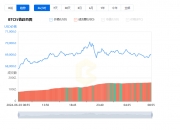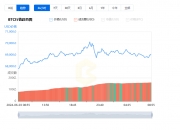一、区块链的特征:
Features of the block chain:
——去中心化管理、去信任依赖、数据可靠(集体维护)、系统开源(公开透明)、节点隐私保护。
- decentralised management, de-trust dependence, data reliability (collective maintenance), open-source systems (open transparency), node privacy protection.
1、去中心化管理:整个系统没有中心化的硬件设备或者管理机构,任意节点之间的权利和义务都是均等的,任意节点的损坏和退出都不会影响整个系统的运作。
1. Decentralized management: the system as a whole has no centralized hardware equipment or regulatory body, rights and obligations are equal between any nodes, and damage and withdrawal of any nodes do not affect the functioning of the system as a whole.
2、去信任依赖:各个节点之间无需相互信任,数据内容和系统运作规则公开透明。
Reliance on trust: there is no need for mutual trust between the various nodes, and the data content and rules of operation of the system are open and transparent.
3、数据可靠(集体维护):每个节点都能获得一份完整的数据拷贝(区块链),并且整个系统由多个节点共同维护,参与系统的节点越多,计算机能力越强,系统数据越可靠。
3. Data reliability (collective maintenance): a complete copy of the data (block chain) is available for each node and the system as a whole is maintained by multiple nodes, the more the number of nodes involved in the system, the more computer capacity and the more reliable the system data are.
4、系统开源(公开透明):整个系统必须是开源的,开源的程序保证了帐薄和商业规则可被所有人审阅,以实现系统运作的公开透明。
4. Open source of the system (open and transparent): The system must be open-sourced, and open-source procedures ensure that books and commercial rules are accessible to all in order to achieve transparency in the operation of the system.
5、节点隐私保护:节点与节点之间无需信任,因此节点与节点之间也无需公开身份,使得各个节点的隐私在一定程度上能够得到保护。
Protection of privacy at nodes: there is no need for trust between nodes and nodes, so there is no need for disclosure of identity between nodes and nodes, thus allowing for some protection of privacy at all nodes.
二、区块链技术的主要应用方向
——基于区块链的优势特征,该项技术存在于广泛的应用场景中,如数据存储、数字身份验证、数据鉴证、金融交易、资产管理等经济和社会管理系统。
- Based on the advantages of the block chain, the technology exists in a wide range of applications such as data storage, digital identification, data validation, financial transactions, and economic and social management systems such as asset management.


三、区块链技术的阻碍和挑战
——作为近年来兴起的新技术,区块链仍然面临一些问题的阻碍。
As new technologies have emerged in recent years, the block chain still faces a number of obstacles.
1、政府监管的挑战:如政府无法按照现行税制收取比特币交易税费,税收结构会被颠覆,从而影响税收经济指标的计算。
The challenge of government regulation: if the Government is unable to collect a tax on Bitcoin transactions under the current tax system, the tax structure can be subverted, thus affecting the calculation of tax economic indicators.
2、运行安全风险:目前区块链技术最大的安全隐患是51%的攻击问题,虽然掌握全网51%的成本远远超过攻击后的收益,但51%攻击的安全威胁还是始终存在的。
Operational security risks: The greatest security risk to the current block chain technology is 51 per cent of the attack, and while 51 per cent of the cost of capturing the entire network far exceeds the post-attack gain, 51 per cent of the attack remains a constant security threat.
3、系统效率及扩展性:比特币区块链目前每秒处理7笔交易,这极大的制约了区块链技术在金融中高频率的交易场景,当前每个比特币区块链的生成时间是10分钟,也就意味着每笔交易的确认时间是10分钟,这在一定程度上限制了比特币在小额交易与时间敏感交易中的使用,导致容量膨胀。
3. System efficiency and expansion: The Bitcoin block chain currently handles seven transactions per second, which severely constrains the high frequency of block chain technology in finance. The current generation time of each bitcoin block chain is 10 minutes, which means 10 minutes for each transaction to be confirmed, which in part limits the use of bitcoin in small and time-sensitive transactions, leading to capacity expansion.
4、隐私泄露风险:区块链系统中各个节点虽然无需公开身份,但也并非完全匿名,而是通过类似电子邮件地址进行标识实现数据传输。虽然地址标识并未与用户身份关联,但区块链的公开透明性,加上各类反匿名身份甄别技术的发展,仍有可能实现部分重点目标的定位和识别。
4. Privacy risk: While nodes in the block chain system need not be publicly identified, they are not completely anonymous, but are marked through a similar e-mail address for data transmission. While the address identification is not linked to the identity of the user, the open transparency of the block chain, coupled with the development of various anti-onym identification techniques, still makes it possible to locate and identify some of the priority objectives.
区块链以分布式系统为核心,广泛被应用到多行业领域,如政府、金融、医疗、能源、慈善、产权交易、电子商务、物联网等典型技术部门与行业中。
The block chain is centred on distributed systems and is widely applied in a wide range of sectors and industries, such as government, finance, health, energy, charity, equity transactions, e-commerce, and goods networking.
作为典型的金融行业,利用区块链技术,实现银行支付清算区块链应用模型。互联网+银行是目前银行业务模式发展的方向,跨界电子支付更是一种典型业务模式,在区块链的技术支撑下,交易中涉及多个部门监管,使得交易更加安全。
As a typical financial sector, using block chain technology, the application model of the bank payment block chain is achieved. Internet+banks are the direction in which the current banking model is being developed. Cross-border electronic payments are a typical business model, supported by technology in the block chain, involving multiple sectors in the regulation of transactions, making transactions safer.
区块链技术是具有普适性的底层技术框架,从可编程数字加密货币体系为主要特征的1.0模式,到以可编程金融系统为主要特征的2.0模式和以可编程社会为主要特征的3.0模式,为各个商业行业领域带来了变革。
Block chain technology is a bottom-of-the-mode technical framework with universal applicability, ranging from model 1.0, which features mainly the programmable digital encryption of monetary systems, to model 2.0, which features mainly the programmable financial system, and model 3.0, which features mainly the programmable society, which brings about changes in various areas of the business sector.
目前区块链技术发展已经完全脱离比特币的范畴,独立的区块链技术平台正在兴起,基于底层的区块链技术平台的应用与行业也纷纷兴起,可以说区块链技术的序幕已经拉开。
The technological development of the block chain is now completely out of Bitcoin, the emergence of a stand-alone block chain technology platform, and the applications and industries of the bottom-based block chain technology platform, it can be said, have opened the front line of the block chain technology.
注册有任何问题请添加 微信:MVIP619 拉你进入群

打开微信扫一扫
添加客服
进入交流群



















发表评论